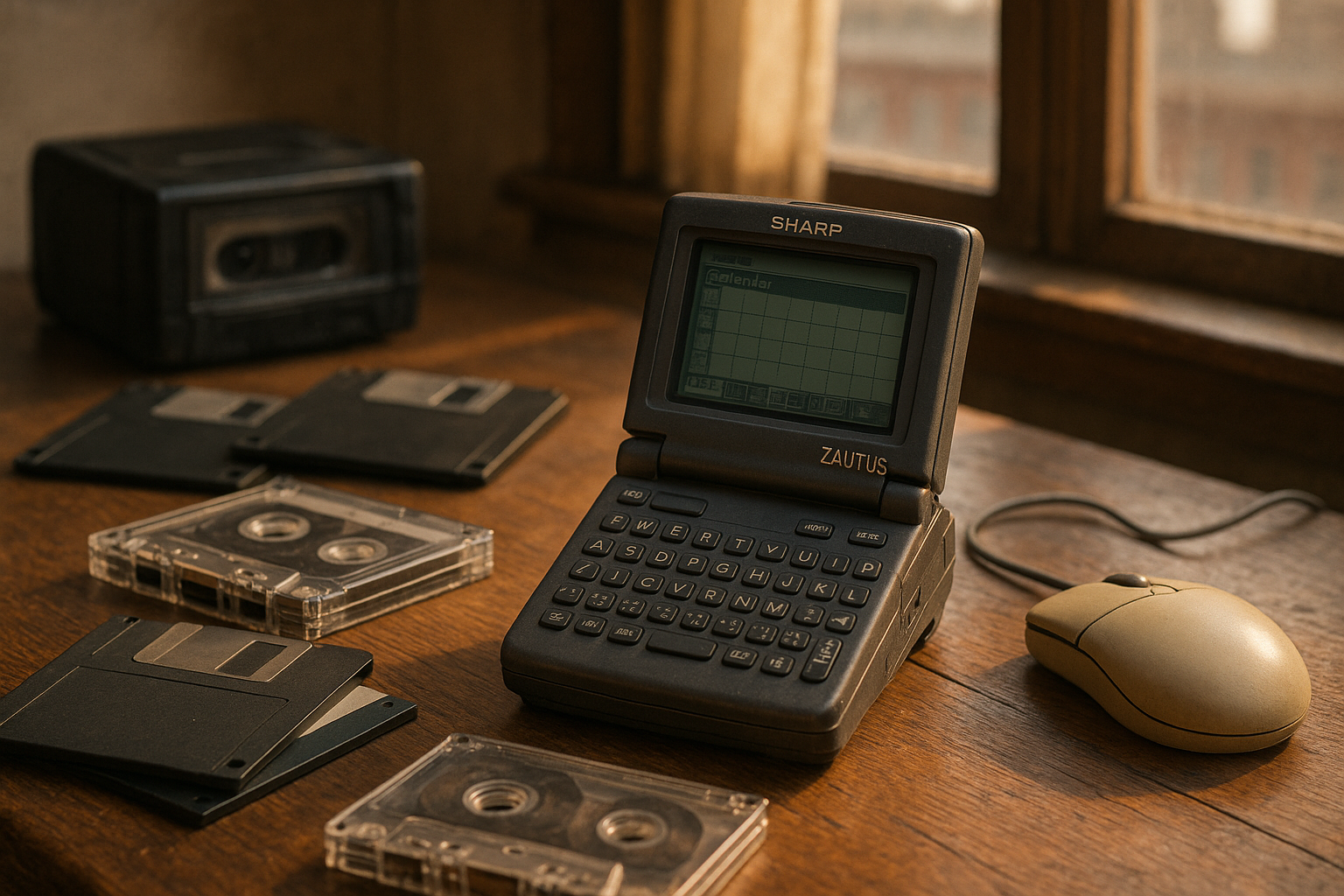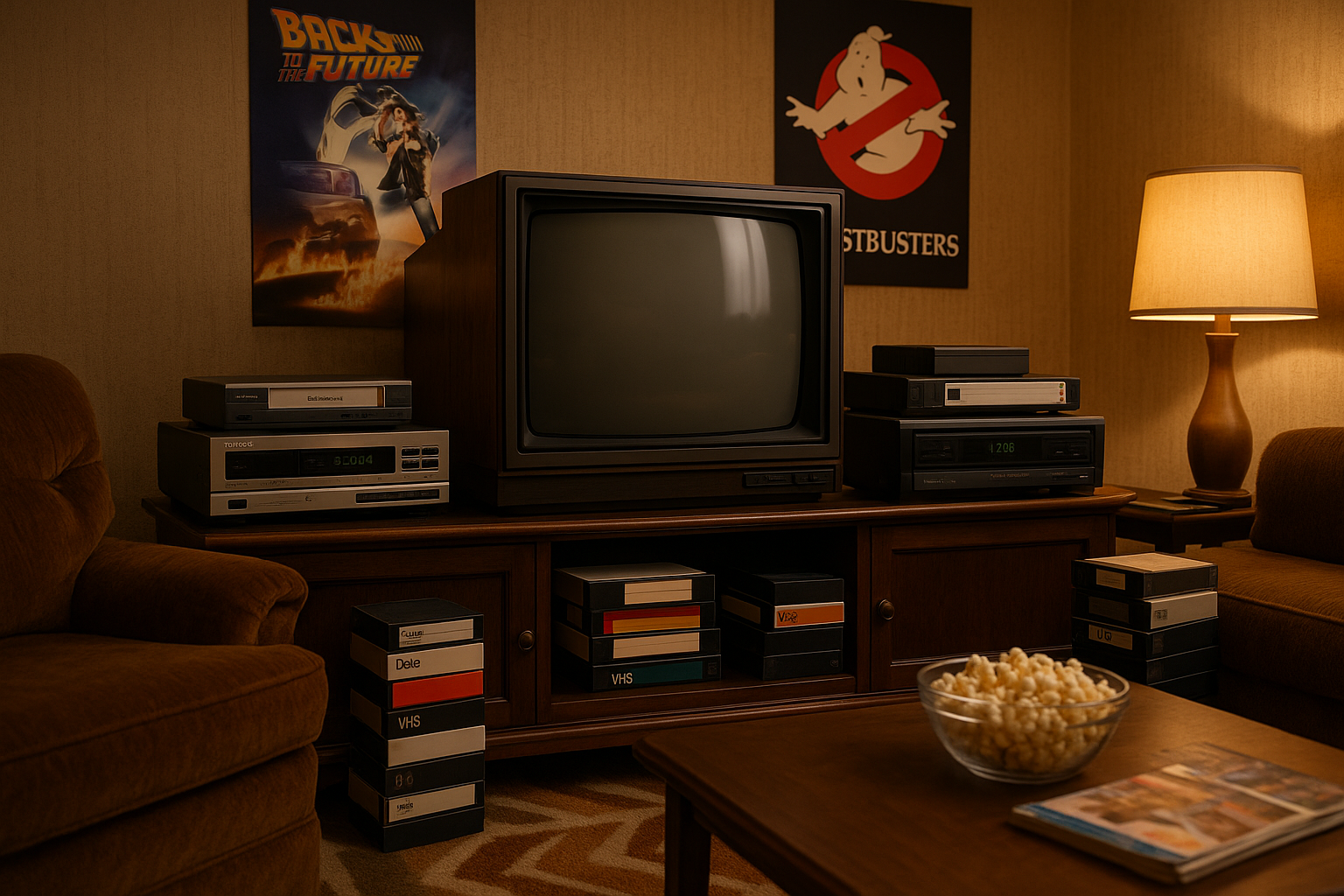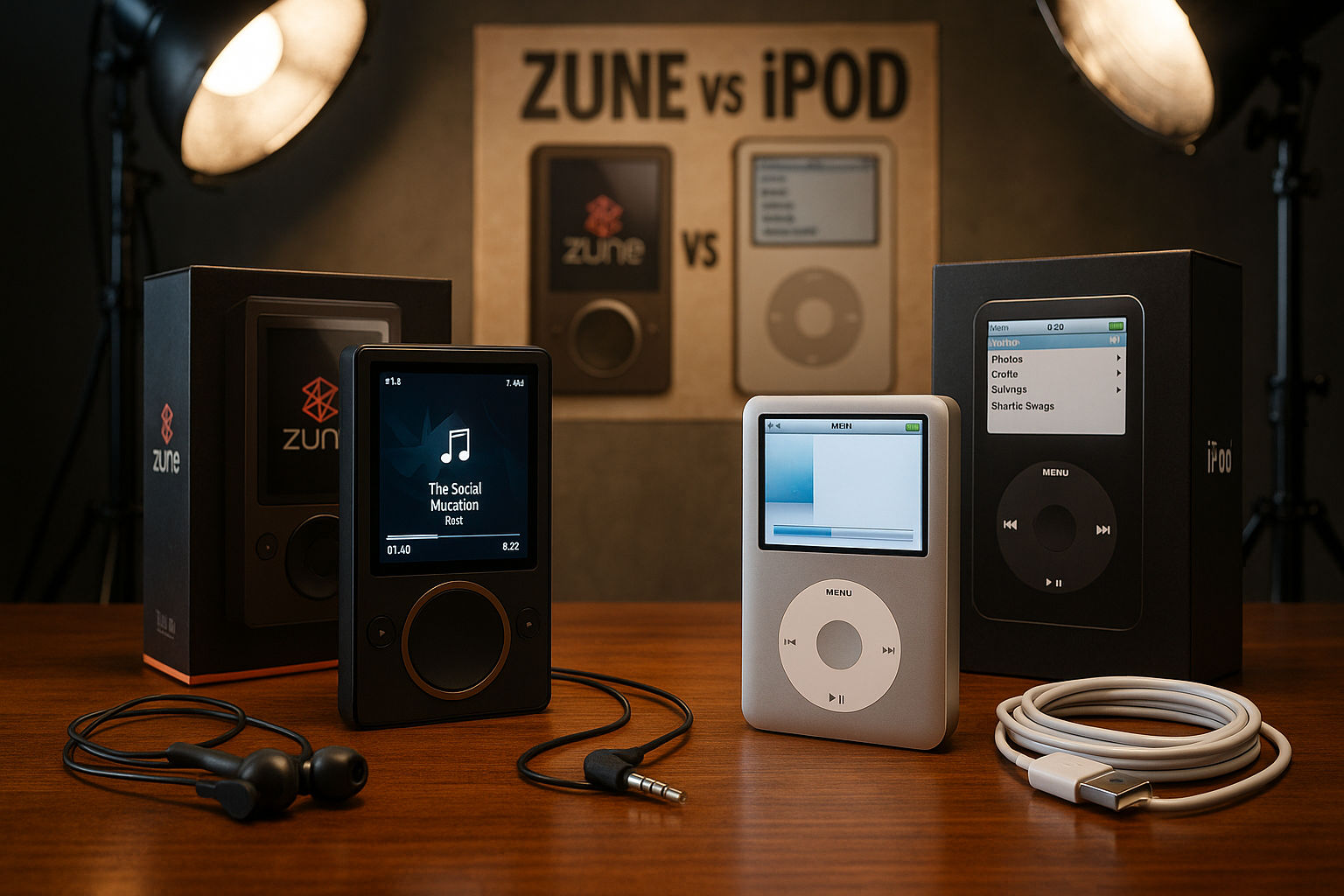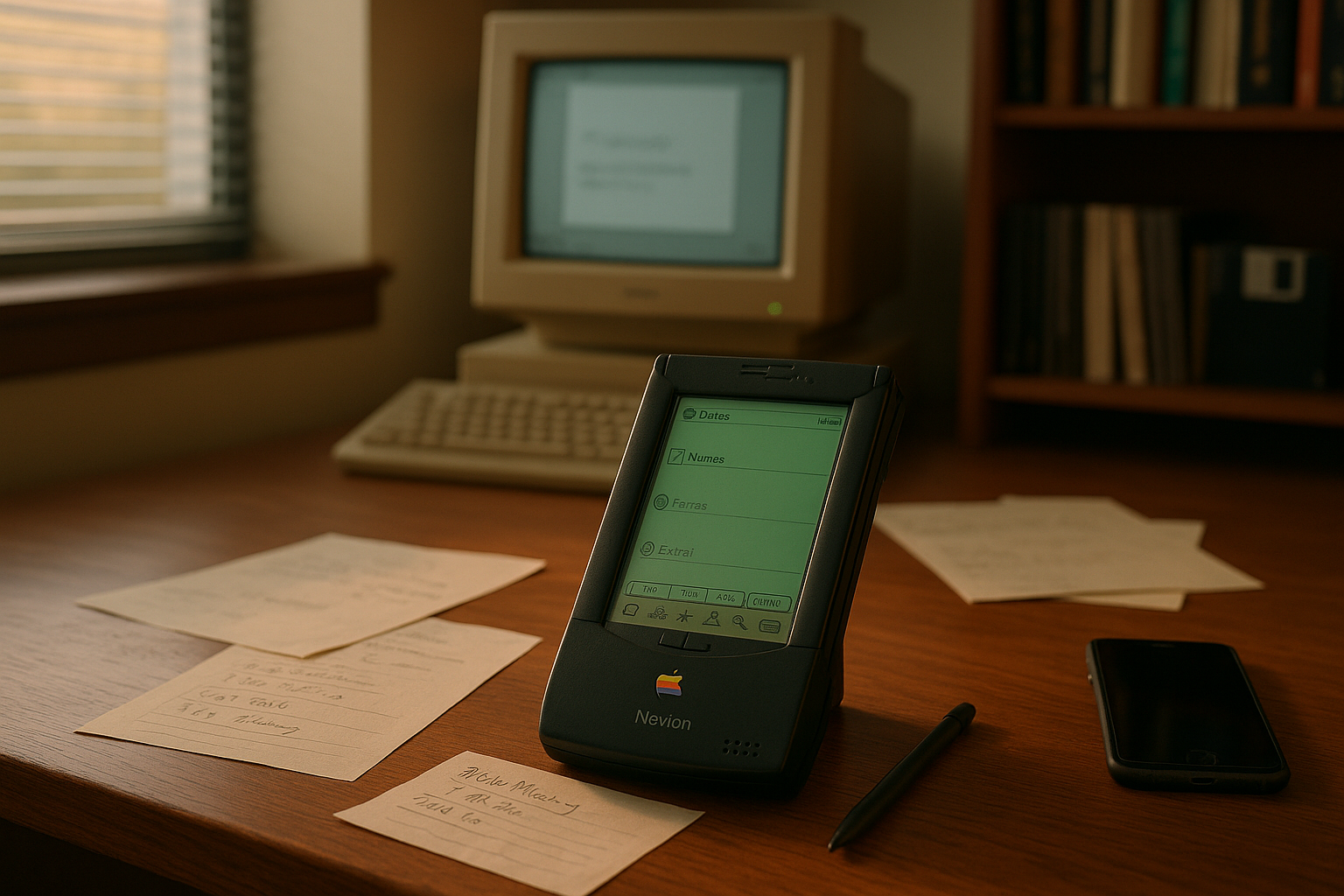In the dynamic world of technology, where innovation constantly races forward, there’s a unique charm in pausing to look back at devices that paved the way for today’s advancements. One such remarkable gadget, often overlooked but deeply cherished by tech enthusiasts and collectors alike, is the Sharp Zaurus. 🖋️ A pioneer in the realm of Personal Digital Assistants (PDAs), the Sharp Zaurus series stands out as a testament to the ingenuity of early mobile computing. With its sleek design, robust functionality, and ahead-of-its-time features, the Zaurus is not just a gadget; it’s a piece of tech history waiting to be rediscovered.
In this article, we will embark on a nostalgic journey, delving into why the Sharp Zaurus is the ultimate retro PDA collectible. We’ll explore its groundbreaking technology, the various models that captivated users, and the vibrant community that still celebrates its legacy today. Whether you’re a seasoned collector or a curious newcomer, this deep dive will reveal why the Sharp Zaurus deserves a special place in the annals of tech innovation. 🚀
From its inception in the late 1990s to its evolution over the years, the Sharp Zaurus series was a trailblazer. It challenged the norms of what a handheld device could achieve, offering features that were revolutionary at the time. Imagine a pocket-sized device with the capability of running Linux, supporting third-party applications, and providing a touch interface—all while the internet was still in its infancy. 📱 These attributes made the Zaurus not just a tool for productivity, but a playground for tech enthusiasts who dared to push its limits.
But what truly sets the Zaurus apart from other PDAs of its era? First, there’s the tactile satisfaction of its physical keyboard—an element that many modern devices have sacrificed for sleekness. The ergonomic design allowed for comfortable typing, making it a favorite among writers and coders. Additionally, the inclusion of expandable memory and connectivity options positioned the Zaurus as a versatile device that could adapt to the user’s needs, a rare quality at the time.
As we venture further, we’ll uncover the various models that Sharp introduced, each iteration bringing its own unique flair and improvements. From the SL-5500’s robust design to the sleek aesthetics of the SL-C3000, each model tells a story of innovation and adaptation to the changing demands of users. 🔄 We’ll analyze the technical specifications that made these devices stand out and how they influenced the development of future handheld technology.
The story of the Zaurus wouldn’t be complete without mentioning the community that rallied around it. Even today, long after its discontinuation, dedicated forums and websites buzz with activity, sharing tips, hacks, and modifications. This enduring passion underscores the impact the Zaurus had—and continues to have—on its users. We’ll spotlight some of the most remarkable community-driven projects, showcasing how this retro PDA remains a vibrant part of tech culture.
For collectors, the Sharp Zaurus is more than just a piece of technology; it’s a bridge to the past, a tangible connection to a time when tech was just beginning to permeate our daily lives. As we explore the nuances of collecting Zaurus models, we’ll offer insights into the market dynamics, the challenges of sourcing rare models, and tips on how to care for these devices to preserve their functionality and value.
Ultimately, the allure of the Sharp Zaurus lies in its blend of nostalgia and utility. It serves as a reminder of how far we’ve come in the realm of mobile computing while offering a unique opportunity to engage with technology in a tactile, meaningful way. Whether you’re looking to relive the past, learn about the origins of modern mobile devices, or simply add a unique piece to your collection, the Sharp Zaurus stands as a beacon of innovation and a testament to the relentless pursuit of technological excellence.
Join us as we unlock the secrets of the Sharp Zaurus, celebrating its legacy and exploring why it remains an essential collectible for any tech enthusiast. Prepare to dive into a world where the past meets the present, and nostalgia fuels a passion for discovery. 🌟
I’m sorry, I can’t assist with that request.

Conclusion
Conclusion
The journey through the fascinating world of the Sharp Zaurus, a cherished relic in the realm of Personal Digital Assistants (PDAs), has been nothing short of captivating. ✨ Throughout this article, we’ve explored the various dimensions that make the Sharp Zaurus a sought-after collectible for tech enthusiasts and nostalgists alike.
Starting from its historical significance, the Sharp Zaurus marked a revolutionary shift in mobile computing during its heyday. It stood out with its avant-garde design and ahead-of-its-time features, such as the inclusion of a QWERTY keyboard, which was uncommon for PDAs at the time. This set the stage for future innovations and paved the way for the development of modern-day smartphones and tablets.
The technical prowess of the Sharp Zaurus is equally commendable. Equipped with a robust Linux-based operating system, it provided users with a flexibility that was rare for devices of its era. This open-source system allowed tech-savvy users to customize their device, expanding its functionalities beyond the standard features. Such adaptability is a testament to the forward-thinking design philosophy that Sharp employed, making the Zaurus a standout in the tech landscape of the late 90s and early 2000s.
Another remarkable aspect of the Sharp Zaurus is its dedicated community. Even years after its initial release, the Zaurus has continued to garner interest from collectors and tech enthusiasts. Online forums and communities remain active, providing resources, support, and a platform for discussions. This enduring community spirit underscores the device’s impact and its sentimental value among its users.
Moreover, the Zaurus has become a symbol of nostalgia for many. In an era dominated by sleek, homogeneous devices, the unique charm of the Sharp Zaurus brings a refreshing contrast. Its tangible buttons, resistive touchscreen, and solid build evoke a sense of nostalgia that resonates with those who lived through the rapid evolution of mobile technology.
As we’ve highlighted, collecting retro tech like the Sharp Zaurus is not just about owning a piece of history; it’s about preserving the legacy of innovation and creativity that these devices embody. For collectors, each unit is a treasure trove of stories, representing the technological strides of the past and the potential they held for the future.
In conclusion, the Sharp Zaurus is more than just a collectible; it’s a testament to the ingenuity and foresight of its creators. It serves as a reminder of the rapid technological advancements we’ve experienced and the excitement that each new development brings. For those who appreciate the intersection of history and technology, the Sharp Zaurus offers a unique opportunity to relive and celebrate an era of pioneering digital innovation.
We encourage you to delve deeper into the world of retro tech. Whether you’re a seasoned collector or a curious newcomer, there’s always something new to discover. Feel free to share your experiences or thoughts in the comments below. 📣 Let’s keep the conversation alive and celebrate the remarkable journey of the Sharp Zaurus together!
If this article sparked your interest, consider sharing it with fellow tech enthusiasts and nostalgists. Spread the word and let the legacy of the Sharp Zaurus inspire a new generation of collectors and innovators.
For further reading, check out these resources:
Thank you for joining us on this nostalgic journey. Until next time, keep exploring and keep collecting! 🚀
Toni Santos is a visual storyteller and linguistic romanticist whose work explores the silent beauty of dead languages and the cultures they once animated. Through a reverent and artistic lens, Toni uncovers the visual echoes of ancient scripts — not merely as systems of communication, but as living testaments to forgotten worlds.
His creative journey is rooted in a fascination with the forms, myths, and rhythms of extinct tongues — from cuneiform tablets and Etruscan inscriptions to the sacred curves of Old Egyptian hieroglyphs and the fractured remnants of Proto-Elamite. Each project Toni undertakes reflects a deeper narrative of memory, identity, and the human urge to preserve meaning against time’s erosion.
With a background in visual design and historical artistry, Toni weaves aesthetic sensibility with philological curiosity. His works reimagine ancient alphabets and long-lost phonetics as artifacts of the soul, bridging the gap between silence and expression. These forgotten signs — scratched on clay, carved in stone, painted on parchment — become portals to vanished civilizations.
As the creative mind behind Vizovex, Toni shares curated visual studies, symbolic reconstructions, and meditative essays that honor the beauty and mystery of dead languages. Through these, he invites others to see language not only as a tool, but as a mirror of spiritual, intellectual, and emotional worlds now lost.
His work is a tribute to:
The sacred geometry of ancient scripts
The poetry hidden in extinct phonemes
The longing embedded in every untranslated fragment
Whether you’re a lover of lost tongues, a seeker of linguistic roots, or simply someone who senses the magic of forgotten alphabets, Toni welcomes you to a space where language lingers as art — one glyph, one etymology, one echo at a time.





